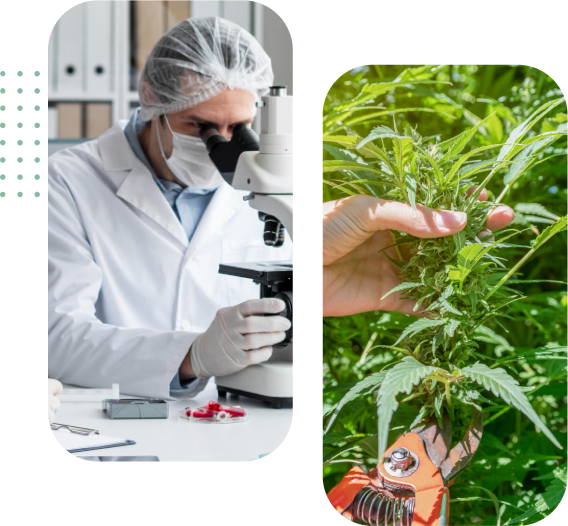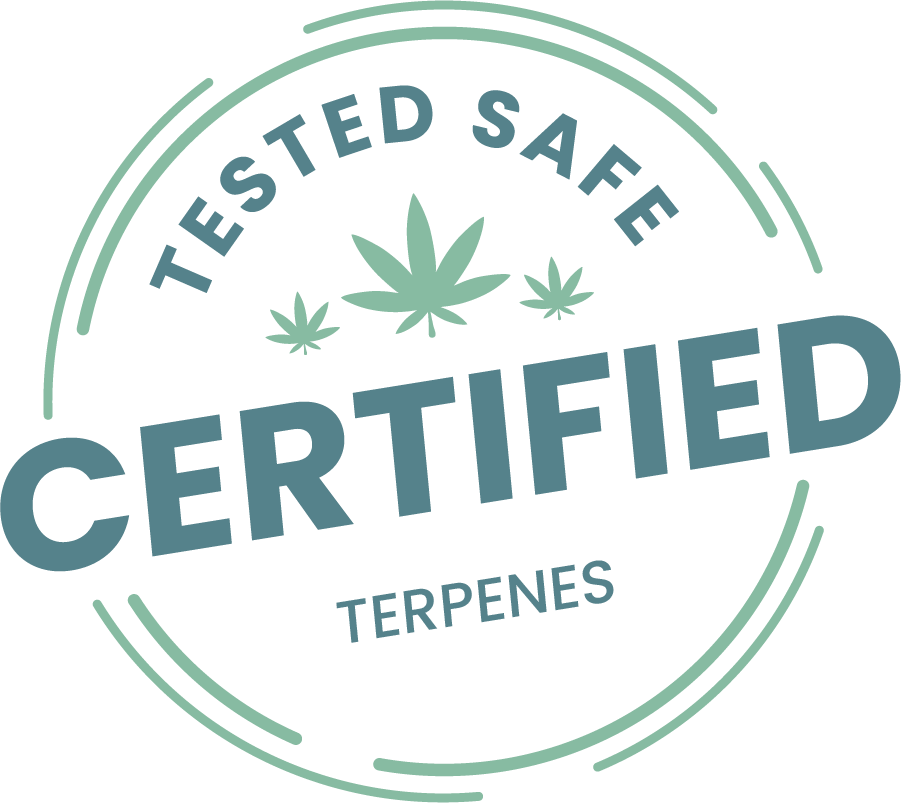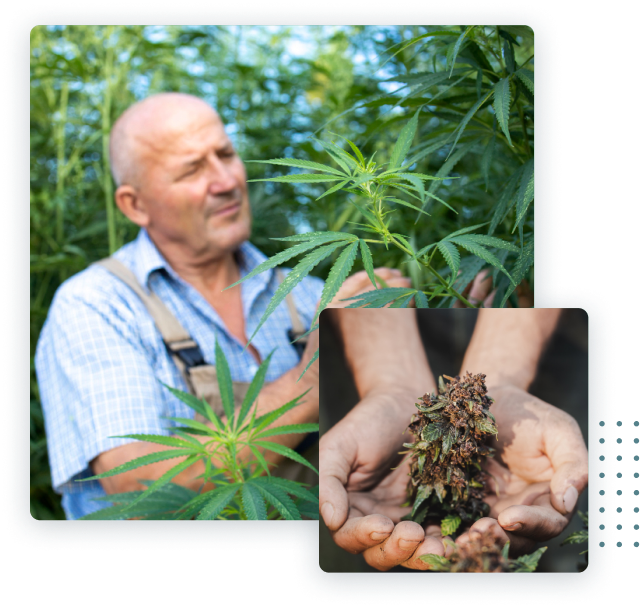Services
Terpenes Testing
Debate on Terpenes in Plant vs Cannabis
The function of terpenes is to lend their unique flavors and aromas and a general chemical profile for cannabis strains. However, there have been some disputes about how safe these non-cannabis infusions are because they often contain other plants, which could cause negative interactions with your body if you're sensitive or allergic to them in specific ways - but this doesn't mean that they are sensitive or allergic to them in the same way that all plant-based blends will behave similarly.

Terpenes and How They Work
According to research, terpenes, including THC and CBD, attach to chemical receptors in the brain and body, delivering signals to assist regulate systems for maximum health. Anti-inflammatory support, relaxation, pain reduction, and sedation are just a few of the advantages. Only terpene profile tests can determine the precise concentration of each of the hundreds of terpenes found in cannabis. Limonene, Myrcene, and Pinene are the most popular and concentrated terpenes.
Predominant Terpenes

The Problem with Terpenes in Cannabis
Terpenes are necessary for experiencing marijuana's whole-plant medical effects, but they're also unpredictable. Cannabis plants contain hundreds of terpenes, each of which has a unique combination of terpenes in variable concentrations. Depending on where and how the strain is grown, even two batches of the same strain can have different terpene profiles. Because of the changes that natural sunshine and environmental stresses produce, plants cultivated outside, for example, have a higher percentage of total terpenes. To repel mosquitoes and survive in this difficult environment, outdoor cannabis produces additional terpenes, such as Pinene.
Cannabis terpenes are exceedingly volatile, in addition to being volatile. Terpenes can easily evaporate if not dried and cured properly, making extraction problematic. Extraction of cannabis flower terpenes is also quite expensive, and the yield is generally significantly lower than extraction from other plants. Customers will pay more because of this inefficient and costly process. As demand for tasty whole-plant goods rises, modern cannabis businesses have looked to nature's mangos, lemons, and pine trees for help.
The Modernist Opinion
Because producers can employ the same chemicals each time they create the product, extracting the same cannabis terpenes from other plants is simple, cost-effective, and more consistent. Plant terpenes also have a stronger flavor and fragrance than cannabis since they are found in higher concentrations in other plants. Increasing the proportion of terpenes in concentrates enhances viscosity, making it easier to use in vape cartridges.
Non-cannabis terpenes also allow corporations to produce strains that no longer exist in nature, allowing for more creativity. The Gainesville Green strain, which was extremely popular in the late 1970s and early 1980s, is a recent example. Sunshine Cannabis produced a blend of plant-based terpenes in collaboration with Rick Naya, Gainesville Green's original developer, to reproduce Gainesville's original profile and reintroduced it in Trulieve dispensaries across Florida.
The advantages of plant-based terpenes are obvious, so what's the catch?

The Purist Objective
Chemically, all isolated terpenes of the same type are the same. Despite this, cannabis purists argue that combining cannabinoids (such as THC and CBD) with non-cannabis terpenes is unnatural and, at high quantities, potentially dangerous. Some companies, according to Chemical News & Engineering, are infusing products with non-cannabis plant terpenes at quantities far higher than those found naturally in cannabis flowers. These products may irritate the skin and lungs at doses more than 15%.
Purists claim that even when cannabis companies employ safe dosage levels, these products still lack the health advantages supplied by the complete plant. Cannabis-derived terpenes are more effective, according to the theory, because they contain trace elements of other compounds found in cannabis that would not be present in other plant terpenes. The Entourage Effect brings these together to increase the therapeutic value of the product. Pure flower extracts, as a result, not only deliver the smell and flavor character, but also maximize the psychotropic and therapeutic advantages.
Concluding the Debate to An End
In the cannabis sector, the fight between innovation and purity is just getting started. Modernists believe they can make infusions that imitate the full range of cannabinoid and terpene concentrations found in cannabis. Modernists argue that their products are safe as long as the terpenes are derived from food-grade plants and match the original cannabis characteristics. Furthermore, the cost savings and improved flavor appeal to consumer need for low-priced goods. Purists may disagree on the therapeutic usefulness of cannabis-derived terpenes, but there is presently no scientific evidence about the risks of utilizing alternatives.
The bottom message for consumers is to always buy products from reputable providers. Meanwhile, the CannaLabs team will continue to monitor the topic and report on any new studies on cannabis vs. non-cannabis terpenes.
We think that labeling items with their terpene profiles is a terrific way to add value, so if you're interested in taking that next step, we'd love to help.
Get Started






